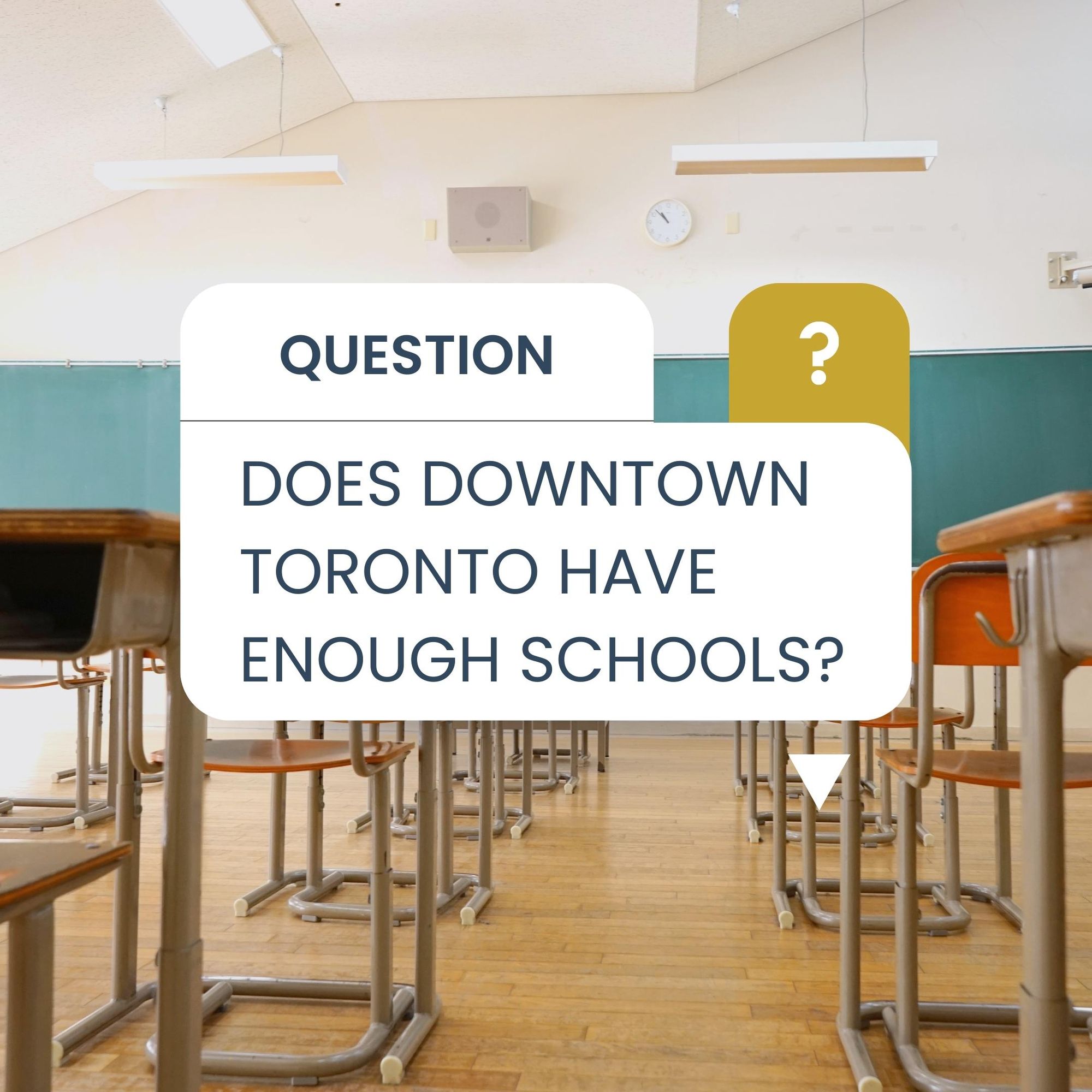Does Downtown Toronto have enough schools?
As Toronto's skyline increasingly becomes a forest of condo towers, a crucial question looms: Is the city's educational infrastructure keeping pace with its residential expansion?


As Toronto's skyline increasingly becomes a forest of condo towers, a crucial question looms: Is the city's educational infrastructure keeping pace with its residential expansion?
This concern is especially pertinent in Downtown Toronto, where the rate of condo development is not paralleled by similar growth in schools, leading to worries about future adequacy of educational facilities.
The Condo Construction Boom
Toronto has witnessed an unprecedented condo boom. The ratio of new housing units to population increase has drastically shifted from one unit for every three new residents in the '90s to one unit for every 1.23 expected new residents today ª.
In June 2018, there were 70,709 units under construction in the Toronto CMA, marking a 3.87% increase from the previous year, with a majority being condo apartments ª.
Lagging School Infrastructure
Contrasting with this residential growth, the development of new schools in downtown Toronto has been comparatively sluggish.
While some investments are being made, such as the $44 million for the Lower Yonge Precinct Elementary School ª, the overall pace and scale of school construction are not on par with the condo developments.
Recent School Openings
In recent years, there have been efforts to address the educational needs in downtown areas.
Notably, Jean Lumb Public School and Bishop Macdonell Catholic Elementary School opened in the CityPlace neighbourhood, each accommodating 550 students from Kindergarten to Grade 8 ª.
These openings are a step towards addressing the growing need for educational facilities amidst the condo expansion.
The Future Implications
Despite these initiatives, the scale of condo development in Downtown Toronto might overshadow these educational advancements.
The burgeoning population in these urban areas necessitates a more comprehensive and forward-thinking approach to school construction.
The disparity between the rapid pace of condo development and the slower rate of building new educational facilities presents looming challenges.
Without a balanced approach, we could see issues such as overcrowded classrooms and overextended educational resources, which could compromise the quality of education and the well-being of students.
Conclusion
The current trajectory in Downtown Toronto shows a city flourishing economically with its condo developments but potentially faltering in providing adequate educational infrastructure.
This imbalance poses significant future challenges. Schools are not just learning facilities; they are community hubs essential for the social and educational well-being of families residing in these high-density areas.
To ensure a balanced and sustainable urban environment, Toronto must align its educational infrastructure development with its residential growth.
The city must act now to prevent a future where its younger residents have homes but lack accessible local educational facilities, ensuring that Toronto remains a city that nurtures both living and learning.
What do you think about this situation?
Let me know in the comments below!
Rylie C.
